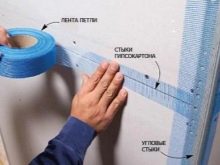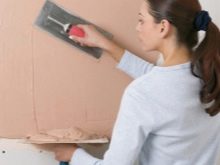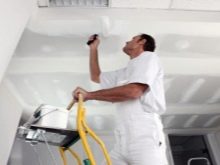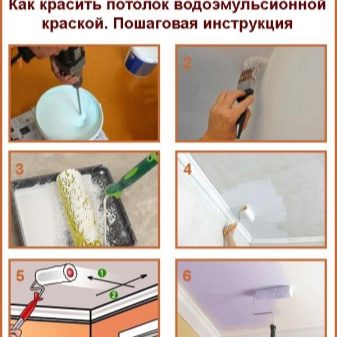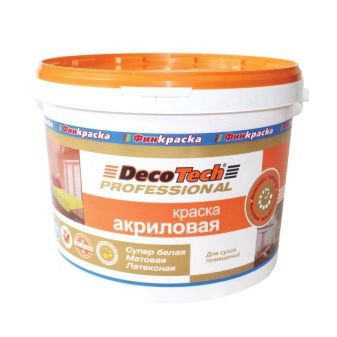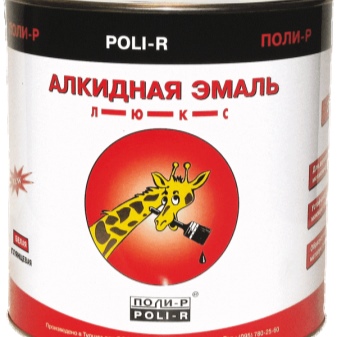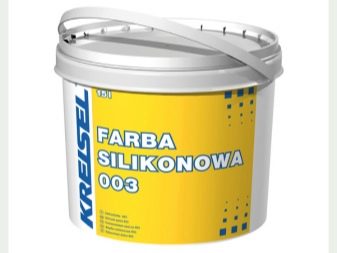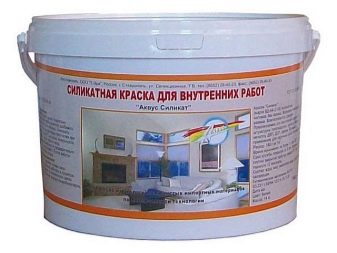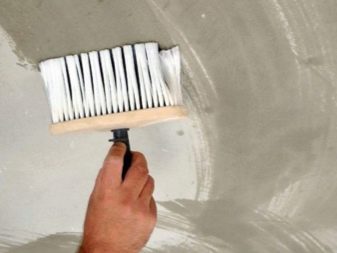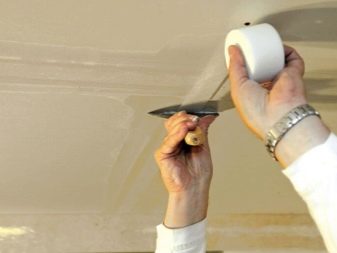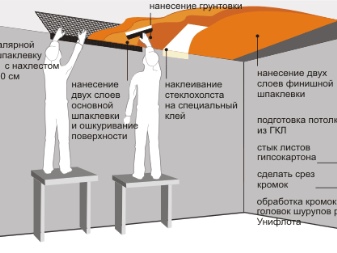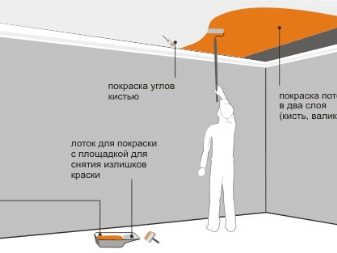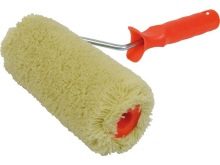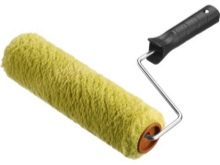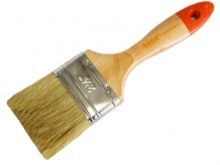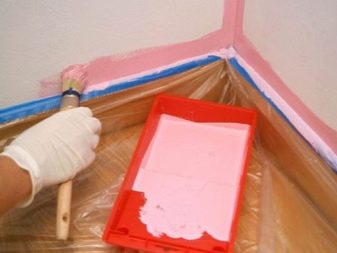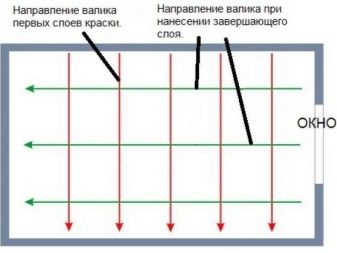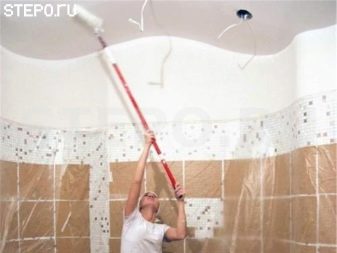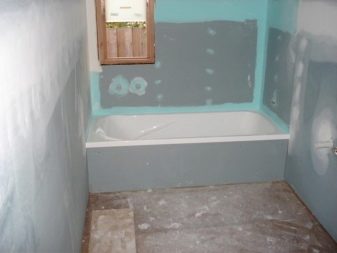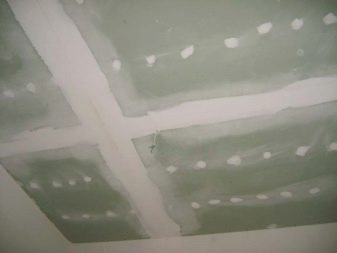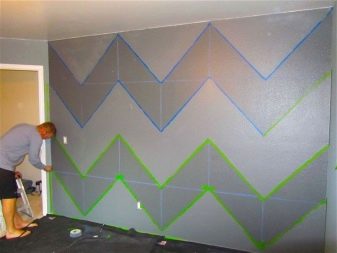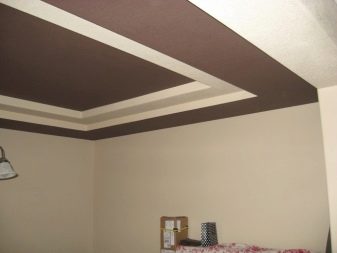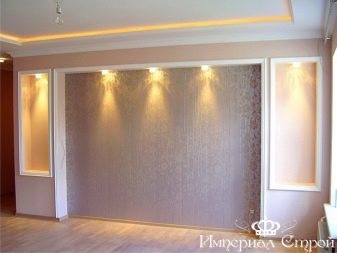Painting drywall: tools and step by step instructions
Drywall is the material with which you can make special any interior. He is able to show the uniqueness of the designs of walls and ceilings. However, to realize the potential, it is often necessary to paint this foundation. We understand the intricacies of painting drywall: we study the process from tools to step by step instructions.
Special features
Drywall is particularly popular, it has a light weight and ductile structure. GKL is used primarily as a finishing material to create additional decorations. However, his characteristic white-gray shade looks ugly and poor. Therefore, many are in a hurry to independently eliminate the lack of appearance with paint.
Drywall is a fire resistant and durable material. It perfectly supports air circulation, than differs from other building materials. This is also a small drawback: the porous structure absorbs moisture. When painting, excess water is absorbed into the drywall. To avoid unaesthetic consequences, it is required to prepare the material for painting. The surface should be prepared using putty, it is important to reinforce the joints. In this case, the surface should be smooth. Abrasive paper will help to eliminate errors.
What can paint?
Finishing work carried out by different colors. To choose the paint correctly, you can explore the nuances of each.
Water emulsion
In the construction market, this paint is sold exclusively in white. With the help of special dyes (colors), you can create any desired shade. At the same time, liquid paint is different in color from the dried version. In order not to be mistaken with the selection of colors, you can contact the experts or vendors who have a special apparatus that allows you to calculate the desired shade.The device calculates the exact amount of color to get the desired color gradient.
Emulsion paint is expensive due to the fact that it is self-leveling when applied. It eliminates all the flaws of the surface of the GCR, forming a smooth matte layer. In addition to the matte surface, there are impurities that can create a beautiful glossy plane. On this basis, it is necessary to clearly determine the choice of paint before buying (the glossy surface will not hide any drawback). Consumption per square meter will be 0.2 kg.
Alkyd
Alkyd enamel is less toxic than the emulsion. It does not inflict severe blows on the wallet because it does not require large amounts when applied. However, it leaves, after drying, a glossy surface on which all the errors of the drywall are visible.
Acrylic
For finishing work on drywall, experts recommend using acrylic paint. It is made of water-based, which increases the resistance to conditions with high humidity. It is advantageous to realize the paint in the bathroom and kitchen.Acrylic dye has a glossy and matte type of surface, but the latter result is more difficult to achieve. A kilogram of acrylic paint is enough for 5 m2. This paint is expensive: it is due to high quality and an acceptable level of toxicity.
Oily
This type of paint is undesirable for painting drywall. The components of the paintwork material will poison the body for a long time. Oil paint has a specific odor that irritates mucous membranes and causes headaches.
Silicate and Silicone
Silicate paint does not cause mold, eliminates the formation of an environment for the appearance of microorganisms. It is a relevant option for painting the material in conditions with high levels of moisture. Silicone paint, due to plasticity, covers various cracks and practically does not require preparatory work. However, it dries quickly, which reduces its popularity during the finishing work. The protective film is formed immediately after application. When choosing a decorative paint experts recommend not to skimp: cheap options have low quality and high levels of toxicity.
Preparatory work
Preparing drywall for painting is especially important: the type of surface depends on the quality of the work done. The main task at this stage is the treatment with a ground solution, which prevents excessive moisture from entering the drywall structure. This procedure is necessary in order to avoid unpleasant consequences in the form of an unevenly painted surface. Stains can not be painted over even with a new layer of paint, as drywall will continue to absorb water, leaving dry residue outside.
Drywall preparation algorithm
It is possible to process drywall clearly following the algorithm presented:
- Preparation begins with a primer. Particular attention is paid to the gaps between the parts of drywall and grooves screws. Before proceeding to the next step, you should make sure that the composition is completely dry.
- For even painting it is necessary to fill the space between the parts with a putty. It is necessary to ensure that the protruding part of the screws did not sink and did not rise above the smooth surface of the base.
- To prevent damage to the corners of the drywall, you must wear special corners, which are fixed with a putty.
- The reinforcement of the seams is carried out by means of a banding tape made of paper.
- Then put a new layer of putty for full leveling of the surface. It should be sanded with sandpaper and primed again.
- The renewed surface should dry out: paint should not be applied on a wet surface.
How to paint your own hands?
Painting drywall carried by brush or construction roller. From the foam version should be abandoned: even with careful and careful application to the surface of the composition with the help of this tool are stains. The paint lies flat under the roller, equipped with natural nap.
To properly paint drywall, you need to decide on the length of the pile:
- For a material with a shiny surface will require a fine pile (no longer than 5 mm).
- Villi of average size are relevant for a matte surface.
- For optimal texture, a long pile (more than 8 mm) is perfect.
- It is better to paint corners and other hard-to-reach places with a flat brush up to 80 mm wide (the roller is too massive, it is impossible for them to paint the surface in such places).
The order of work must be carried out, following the steps of the instructions, taking into account the subtleties of the process:
- Paint gets final appearance after drawing the third layer.If you paint the drywall only once, a layer of putty will look ugly through the finishing material.
- First paint the boundaries of the site. It should be carefully painted with a brush protrusions of the corners and decorative stucco (including chandeliers). These manipulations are necessary to avoid stains on the ceiling after using a roller to paint the main area.
- After the paint on the periphery of the area has dried, you should take a roller and fully dip it in the paint. To distribute the same amount of finishing material should be carried out several times in one line.
Experts recommend not to rush to the new immersion of the roller in the paint. As soon as all the material leaves the pile of the tool, you should clean up the newly painted area. To do this, a wet roller is carried out on the surface of the painted ceiling. If more than a few minutes have passed since the application, you do not need to carry out this procedure, because the finishing material has already dried.
The technology of applying a new layer consists in perpendicular coating of the previous one. However, before that it is worth waiting until the paint is completely dry.Upon completion of the work, the surface should be checked for flaws. To this end, drywall illuminate a bright lamp at a slight angle. Spots and visible imperfections are cleaned and repainted.
When using enamel should act differently. The finishing material is applied in two layers in zigzag movements. Experts recommend to apply paint with a semi-dry roller for even application. Often used technology under the "brick".
Types of paints
The paints and varnishes most demanded in the construction market are the following types of paints:
- alkyd enamel;
- Oil paint;
- acrylic paint;
- water mixture.
Oil paint and alkyd enamel are equally good for finishing work in rooms with a high concentration of moisture. However, they have a high level of toxicity. This deficiency has to be eliminated by airing the room. Positive characteristics are the lowest consumption per 1 m2 and withstand all types of leaks.
Aqueous emulsion paint prefers costs in large sizes. The water emulsion keeps a leading position in the market, thanks to creation of an opaque and nice on the touch surface.The main advantage of this material is the possibility of obtaining any shade, thanks to colors. The only negative - this finishing material is not suitable for painting in conditions with high temperature and humidity.
In the bathroom
Painting drywall in the bathroom has important nuances: in this room there is always an increased level of humidity. When choosing paint should be repelled by materials based on water, which creates the necessary condensate. It resists excess water and contributes to the long-term use of the finishing material.
After finishing work, the bathroom should be locked until the paint is completely dry. Professionals do not recommend to buy for this room too bright colors due to the fact that over time they fade, they will look ugly. Depending on the choice of paint dries from 4 hours to a day. During this time, you cannot touch the surface and allow drafts, since only the surface layer will dry.
Tips and tricks
To avoid unpleasant consequences and frustration when painting, Experts advise to focus on some of the nuances:
- Upon completion of the work drywall should look nice. For painting, you must consider the type of room. For the bathroom and kitchen, you should choose a water-based paint that is resistant to moisture.
- The method of application affects the appearance of the surface. For GCR, the best option is a roller with a pile of medium length.
- When applying paint of different shades it is necessary to divide the surface with the help of chalk or masking tape.
- It is better to apply the last layer of paint along the room, while painting should begin from the periphery from the ceiling to the floor.
- Before starting work it is recommended to mix the paint well and dilute it if necessary. Mix the water emulsion with water, for enamel it is better to save solvents.
- Different types of paint when drying change the original color. The emulsion mixture turns pale in several shades, enamel and oil paint, on the contrary, darken.
Even if it was not planned to paint drywall, it should be done. If improper transportation plasterboard comes to the apartment with dents, over time the corners can get off, and the caps of the screws will reproachly look out of the material. To fix these problems will help putty.However, even the surface primed with putty will not look attractive.
Successful examples and options
Below you can look at good examples of drywall painting. This will allow you to understand how to best drywall.
How to paint yourself drywall yourself, see the next video.

